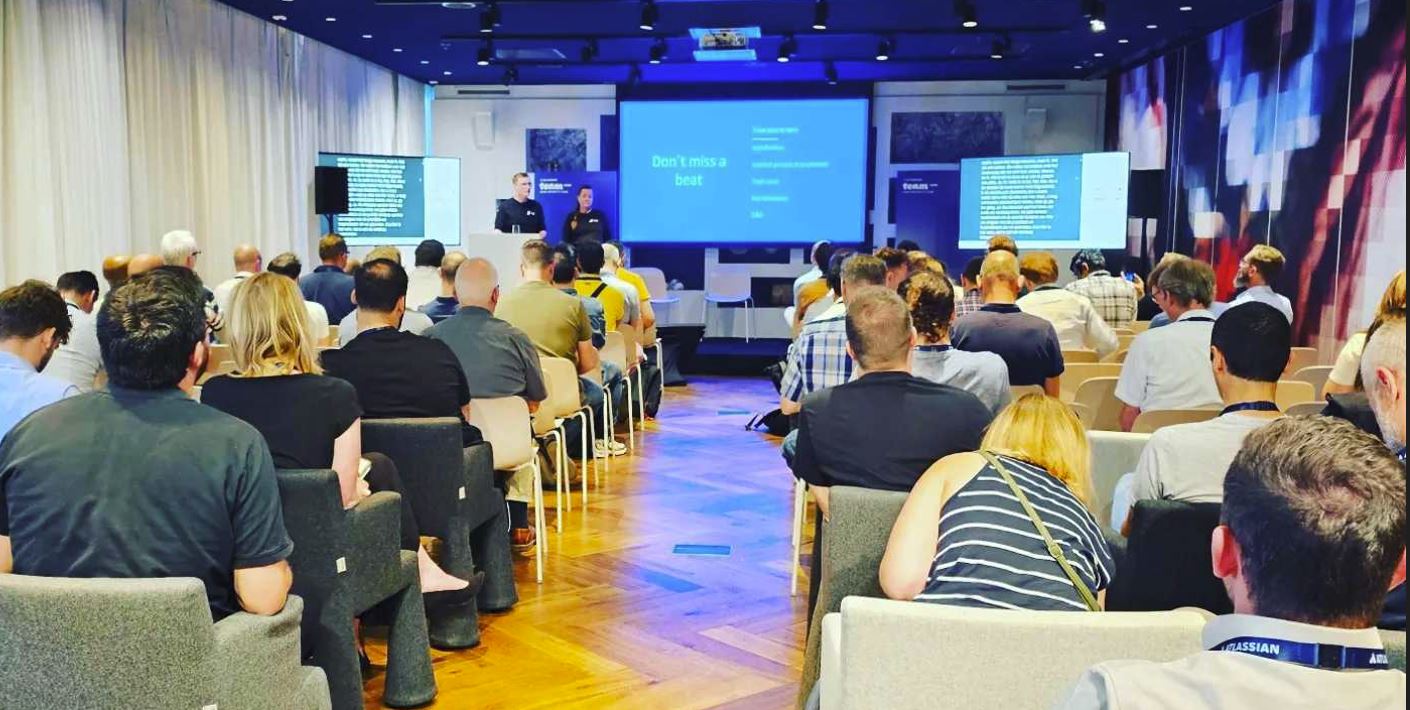A Journey of Continuous Improvement
Don’t miss a beat: Managing incidents with Jira Service Management
Incident management is a critical aspect of maintaining uninterrupted services, and for organizations committed to excellence, it’s a journey of continuous improvement. Recently, in a session that resonated with IT Service Management (ITSM) professionals, Annicka Rosengren and Marcus Nygren from Stretch Addera shared their insights and real-world experiences in the pursuit of enhancing incident management. This blog post dives deep into their presentation, providing valuable takeaways for ITSM practitioners.
Agile Practices for Continuous Improvement
Annicka opened the session by highlighting the significance of adopting agile practices for continuous improvement. Agile principles empower teams to collaborate seamlessly, iterate, and evolve. In the context of incident management, this approach becomes a linchpin for efficient workflows.

Incident Management Challenges
Marcus initiated an interactive segment by engaging the audience, seeking insights into their current incident management tools and processes. The challenges identified resonated with many:
- Siloed Incident Handling: Numerous organizations operate in isolated silos, hindering knowledge sharing and collaboration during incident resolution.
- Lack of Proactive Monitoring: A reactive approach to user-reported incidents often overshadows proactive issue identification and resolution.
- Complex Communication Channels: The proliferation of communication channels, including email, chat tools, and lack of dedicated support channels, creates confusion during incidents.
- Missing Post-Incident Analysis: The failure to conduct post-mortems and root cause analyses post-incident hampers learning and improvement.
Starting the journey, the incident management process could look like the below scenario. Incident gets reported by one or several users and a reactive manual response solves the incident and does not make any learnings from it.
Improving Incident Management
To address these challenges head-on, Annicka and Marcus proposed a phased approach to enhance incident management:
- Proactive Monitoring: Implementing OpsGenie to detect outages and automatically generate incident tickets in Jira Service Management.
- Streamlined Communication: Integrating OpsGenie with Slack and Jira Service Management to centralize incident communication and track updates.
- On-Call Scheduling: Leveraging OpsGenie’s on-call schedule to ensure a 24/7 response team for critical incidents.
- Collaborative Huddles: Conducting incident huddles to maintain a centralized command center for communication and collaboration.
- Blameless Post Incident Reviews: Incorporate Blameless Post-Incident Reviews. Use the 5 Whys method, documented in confluence, and published to facilitate learning from each incident.
Atlassian OpsGenie features
Annicka showcased OpsGenie’s features, including on-call scheduling and the command center, facilitating real-time collaboration during incidents. OpsGenie streamlines communication, ensuring that team members can contribute without causing disruptions or losing track of critical information.
Marcus emphasized that OpsGenie serves as the centerpiece of their incident management process, seamlessly integrating with other tools and providing real-time alerts and updates.
Continuous Improvement and Iteration
One crucial aspect that Annicka and Marcus highlighted was the importance of iterating on incident management processes continually. Incident management isn’t a static domain; it should evolve alongside organizational needs and emerging challenges. By staying open to improvement and adapting practices as needed, organizations can optimize their incident response over time.
After several iterations, the incident management process may have evolved into the scenario below, where most incidents are detected before they escalate into an incident, and when an incident occurs, there is support for both communication and learning.
Dos and Don’ts in Incident Management
The session concluded with essential dos and don’ts for effective incident management:
Dos:
- Transparent Communication: Keep stakeholders informed through public channels, ensuring clarity and reducing duplicated communication.
- Collaborative Teamwork: Work together as a cohesive team during incidents, fostering effective communication and process improvement.
- Flexible Processes: Embrace adaptable processes that can evolve with changing circumstances and organizational needs.
- Learn and Adapt: Continuously learn from incidents, analyzing root causes, and adapting workflows and tools accordingly.
Don’ts:
- Silent Response: Avoid staying silent during incidents; proactive communication is key to stakeholder confidence.
- Isolation:Refrain from working in isolated silos; incident management thrives on collective effort.
- Rigidity: Don’t let processes become too rigid; be open to refining and improving them based on experience.
- Repeating Mistakes: Break the cycle of repeating mistakes by learning from each incident and making necessary adjustments.
Aim for uninterrupted services
The journey of enhancing incident management with agile practices and Atlassian tools is a path worth embarking upon. Stretch Addera’s experience and insights serve as a guiding light for organizations seeking to streamline incident response, reduce downtime, and cultivate a culture of perpetual learning.
This insightful session, previously presented at the Atlassian ITSM Team Tour and reiterated at the Atlassian Community event in Gothenburg, emphasizes the value of sharing knowledge within the ITSM community. It encourages teams to reevaluate their incident management processes, aiming for excellence in delivering uninterrupted IT services.

At Stretch Addera, teamwork is the core. Our team of 50+ certified Atlassian consultants works closely with our customers to ensure the right combination of Atlassian tools, the Stretch Team, and our services. Annicka and Marcus play vital roles in the organization, contributing their expertise and experience to help customers achieve their goals.
